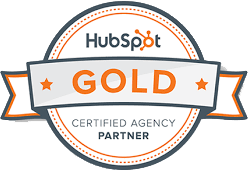
For decades, B2B marketing revolved around the traditional funnel: awareness at the top, purchase at the bottom, and predictable stages in between. This linear model no longer reflects how buying happens today. Several disruptive forces are reshaping the journey, including AI, privacy regulation, dark social channels, and empowered individual users. The most profound shift? Bottom-Up Buying.
What is Bottom-Up Buying?
Bottom-Up Buying describes a trend where individual users, not corporate procurement teams, drive the adoption of business technology. Instead of waiting for their organization to purchase tools, employees take matters into their own hands. They discover, trial, and even purchase apps directly, sometimes expensing them, other times paying out-of-pocket. This breaks the traditional long-tail funnel and places buying power squarely in the hands of the user.
Related Concepts
- Self-Serve B2B: Users can start using products with no sales involvement.
- Shadow Purchasing: Purchases happen outside IT and procurement oversight.
- Consumerization of B2B: Business software now mirrors the ease and speed of consumer apps.
What Drives This Shift?
- AI Democratization: Individuals have access to powerful AI tools they can implement instantly.
- Upskilling Trends: Employees adopt tools to enhance their productivity and career prospects.
- Budget Decentralization: Small discretionary budgets empower employees to purchase what they need.
- User Experience Expectations: People expect business tools to be as seamless as consumer tech.
- Speed Over Process: The corporate procurement process is too slow for today’s fast-moving professionals.
PLG vs. ULG: How Are They Different?
While Product-Led Growth (PLG) and User-Led Growth (ULG) share similarities, they are distinct in key ways:
- Product-Led Growth (PLG): PLG relies on the product itself as the primary driver of customer acquisition and expansion. It emphasizes frictionless onboarding, viral loops, and the product delivering clear value quickly. Examples include Slack, Zoom, and Dropbox, where adoption spreads organically because the product experience is exceptional.
- User-Led Growth (ULG): ULG goes beyond product virality to focus on the individual as the economic buyer and change agent. It recognizes that users are purchasing tools for personal gain—upskilling, productivity, or career advancement—even before the enterprise is involved. AI-enabled apps and self-serve SaaS platforms have accelerated this trend, with employees adopting tools outside traditional procurement. Customer-led growth is also
Key Difference: PLG is about how the product sells itself; ULG is about how empowered users drive purchasing decisions—often bypassing enterprise processes entirely.
Wondering how User-Led Growth might be leveraged in your organization? Let’s talk >
Benefits of User-Led Growth
User-led growth offers several advantages for both vendors and customers:
- Faster Market Penetration – Individual users can adopt and spread tools quickly without waiting for long procurement cycles.
- Lower Customer Acquisition Costs – Marketing directly to users reduces reliance on lengthy enterprise sales efforts.
- Stronger Product Advocacy – Empowered users become champions who influence internal adoption.
- Higher Retention Rates – Tools that deliver personal value tend to have stickier usage and long-term loyalty.
- Natural Path to Enterprise Deals – Organic adoption builds a base that supports later enterprise-level contracts.
- Live Feedback Loop – User-Led Growth gives you a live feedback loop straight from the front lines, super-charging any broader Customer-Led Growth initiatives.
These benefits make user-led growth a powerful complement to traditional enterprise strategies.
The Dual Journey Model
To succeed in this environment, companies must understand two parallel buying paths:
- Traditional Enterprise Journey (Top-Down): Awareness, consideration, decision, adoption, and expansion driven by procurement and IT.
- User-Led Journey (Bottom-Up): Personal need, discovery, self-serve purchase, advocacy, and internal expansion driven by individual users.
These journeys converge at the Expansion Point, a critical moment when grassroots adoption by individual users gains enough momentum to influence organizational decision-makers. At this stage, user success stories, measurable productivity gains, and internal advocacy create undeniable proof of value. Procurement and IT teams take notice, often prompted by internal demand, and what began as a single-user initiative evolves into a department-wide or enterprise-level rollout. This natural progression turns early adopters into champions and accelerates the path to larger contracts.
Tips for Developing a User-Led Strategy
Building a successful user-led growth strategy means meeting individuals where they are and making it effortless for them to discover, adopt, and champion your product. Rather than focusing on enterprise procurement, marketers must empower users to take the lead. Here’s how to do it:
- Allow for Credit Card Purchases – Make it simple for individuals to buy without corporate involvement.
- Offer Freemium and Low-Cost Entry Points – Provide self-serve trials to lower adoption barriers.
- Focus on Personal ROI – Highlight how the tool advances their productivity and career.
- Build Community – Create peer support and advocacy channels where users share success.

User-Led Growth in Context
User-led growth is already reshaping markets. Companies like Figma and Notion have grown rapidly by empowering individual users to adopt their tools first—designers experimenting with Figma or knowledge workers organizing their workflow with Notion—long before enterprise contracts were signed. These users became internal champions, driving wider adoption and ultimately leading to enterprise-scale deals. This approach shows how personal productivity wins can translate into organizational transformation. Note, some practitioners bucket this under the broader banner of Customer-Led Growth (CLG) — a philosophy that every strategic choice starts with listening to customers first.
User-Led Growth Strategy Framework
To operationalize user-led growth, consider this three-phase framework:
- Attract
- Create content and campaigns that speak to individual career advancement and productivity gains.
- Use social proof, communities, and influencer voices to drive discovery.
- Make it easy to try with freemium or low-commitment onboarding.
- Empower
- Provide seamless self-serve purchase options and quick-start resources.
- Offer onboarding that highlights immediate personal wins.
- Enable users to share their success internally through built-in advocacy tools.
- Expand
- Identify pockets of user adoption and nurture them into departmental wins.
- Arm users with materials to influence decision-makers.
- Transition to enterprise messaging when usage scales, focusing on security, compliance, and ROI.
This framework ensures marketers engage individuals first while building a bridge to broader organizational adoption.
Why This Matters for Marketers
The implications are clear: marketers can no longer rely solely on top-down enterprise sales strategies. In addition to traditional buyer’s journey mapping, they must include individual engagement and user transactions. Winning strategies now involve:
- Marketing to individuals with personal value propositions.
- Offering low-friction trials and freemium models.
- Building user communities and advocacy programs.
- Preparing enterprise-level messaging for when adoption scales.
Conclusion: Embrace the User-Led Enterprise
Bottom-Up Buying isn’t just a passing trend; it’s the new reality of enterprise growth. Marketers who master both journeys will remain visible and credible in a world where the funnel has been blown apart.
Ready to thrive in a bottom-up world? Let’s talk about how to adjust your marketing strategies to capture both individual users and enterprise buyers.


